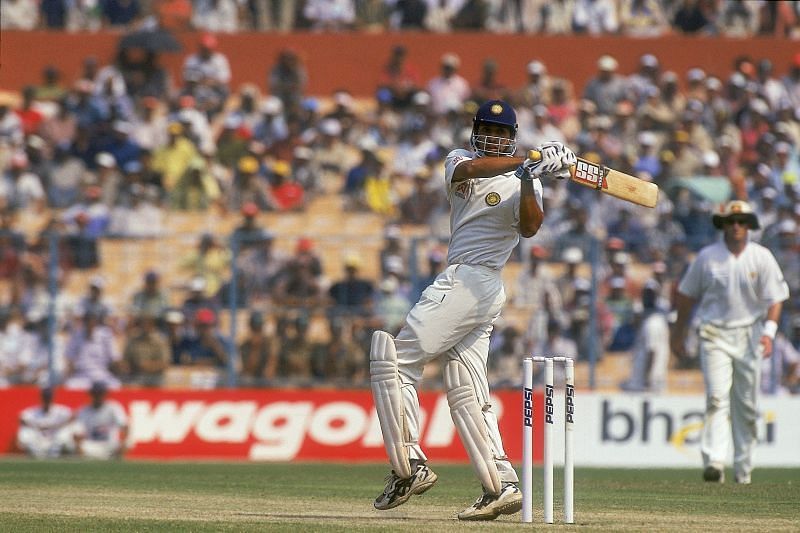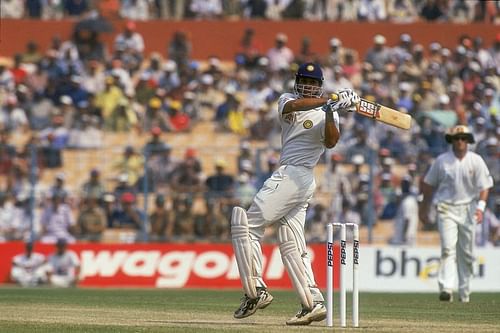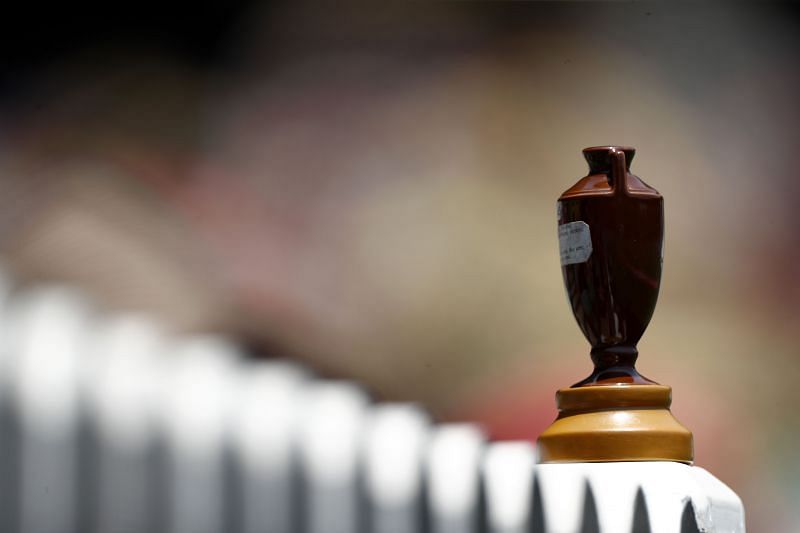
10 greatest performances in Test cricket

Since England and Australia played in Melbourne in 1877, more than 2000 Test matches have been played.
There have been several great and memorable performances since then. While on 97 occasions in Test cricket a bowler has taken eight or more wickets in an innings, there have been 30 instances of a batter scoring 300 or more runs in an innings.
Yet context is important when comparing individual performances. Brian Lara’s world-record 400 not out against England was inarguably a great innings. But it was on a flat Antigua pitch, and Lara - who was West Indies' captain at the time - could have reasonably declared much earlier than batting into the third day.
While Lara's innings remains the highest score in Test cricket, it is difficult to say if it is the best innings anyone has played in the longest format. In fact, it probably wasn't even Lara’s best innings.
Similarly, George Lohmann’s 15/45 (7/38 and 8/7) against South Africa in 1896 may have been one of the most statistically impressive feats in a Test match, but it was partially diminished by the conditions.
England were playing a far inferior South African side who failed to score more than 151 in a single innings during the three-match series. Furthermore, the Port Elizabeth pitch would have likely fallen well short of modern standards.
If a bowler was to take 15/45 against today’s South African side, it would likely put the feat in contention for this list, but Lohmann’s spells, while impressive, are not among the greatest.
While the raw figures are important, they are subsequently not the only determining factor in evaluating a performance. The opposition, the conditions, and the state of the match are all crucial in determining the quality of a performance.
A selection of honorable mentions has also been included before revealing the greatest performance in Test cricket history.
#10 Charles Bannerman (165 not out and 4 against England in 1877)

What better place to start than the first Test match ever?
Charles Bannerman faced the first ball in Test match history, delivered by England’s Alfred Shaw.
The historical significance of his innings was solidified from the very beginning, but even outside its historical context, Bannerman’s 165 can be regarded as one of the finest batting performances in a Test match.
Bannerman’s 165 saw him make 67.35 per cent of Australia’s runs during the innings, as the hosts would fall for 245.
Remarkably, more than 140 years on, no batter has scored a higher percentage of their team’s runs in a Test match innings. The closest Bannerman’s record has come to being toppled was when Michael Slater made 123 of Australia’s 184 runs against England in 1999 (representing 66.85 per cent of the Aussies' total).
Bannerman’s innings would be cut short as he was forced to retire hurt. Although he would return in the second innings, he was less successful then.
The innings was all the more extraordinary for the man who made it as Bannerman was no superstar.
The century would be the only one in his 44-match first-class career during which he would average a meager 21.62.
Nevertheless, it helped Australia to a 45-run win and helped secure Bannerman’s place in history.
#9 Imran Khan (6/98 and 5/82; 117 not out against India in 1983)
In the early 1980s, Imran Khan was arguably bowling as well as anyone had bowled.
He averaged less than 20 with the ball for five consecutive years between 1981-86, despite often bowling on pitches that favored batsmen.
In 1982 he took 62 wickets at an average of just 13.29, and in his first match of 1983, he would continue his form.
India and Pakistan were playing a six-match series.
The batsmen dominated the series. While Zaheer Abbas, Mudassar Nazar, and Javed Miandad would all average over 100, nine batters in total would average more than 50.
Meanwhile, the bowlers suffered as only three averaged below 40 for the series and only one below 30.
The bowler was, of course, Imran Khan, who seemed to be playing on different pitches, taking 40 wickets at just 13.95.
In a series of excellent performances, the third Test saw Khan’s finest.
India started on the front foot, scoring 372 but would have scored far more had Khan not taken 6/98. His victims included Sunil Gavaskar and Dillip Vengsarkar.
Pakistan proceeded to dwarf India’s total, eventually being bowled out for 652.
Khan again played a starring role, belting 117 off 121 deliveries, including five sixes.
As India’s focus turned to the draw, Pakistan’s focus turned to Khan.
Khan’s 5/82 saw him once again dominate the Indian batsmen, leaving Pakistan with just seven to chase.
#8 Denis Lindsay (69 and 182 against Australia in 1966)
By the time South Africa were banned from international cricket in 1970 due to apartheid, they were fielding possibly the best Test team since Australia’s 'invincibles'.
Their final series before their 22-year hiatus saw them batter Australia 4-0.
With the bat they had imposing figures such as Barry Richards and Graeme Pollock, and on the bowling front, they had the pace of Peter Pollock, and the skill and accuracy of Michael Proctor.
But equally important was the man behind the stumps, Denis Lindsay, who was one of the finest wicketkeepers of his generation and a more than capable batsman.
In 1965 South Africa defeated a strong England team in a three-match series, and in 1966-67, they played a five-match series against Australia and were eager to claim another major scalp.
Yet when the series began in Johannesburg, things could hardly have gone worse for the hosts.
Australia breezed through South Africa’s top order, and by the time Graham McKenzie removed Graeme Pollock for just 5, South Africa were flailing at 5/41.
It was at this stage Denis Lindsay joined Herbert Lance at the wicket.
Before the Test, Lindsay averaged just 21.84 with the bat and Herbert Lance just 21.22.
Yet the two resuscitated their side with a 110-run partnership to get South Africa back into the match.
Lindsay would top score for South Africa with 69, but he was only able to push his side’s total to 199.
Australia comfortably passed this total, making 325.
It could have been a lot more if not for the six catches Lindsay took. He ended the series with 24 catches, a then-record.
Yet it was when he returned with the bat that Lindsay truly changed the complexion of the game.
South Africa’s top order performed better in their second innings, and when Lindsay strode to the crease the match was evenly poised. The Proteas were five wickets down but had a 142-run lead.
Lindsay helped convert it into a 495-run lead with an exceptional 182.
His innings included a 221-run seventh-wicket partnership with captain Peter van der Merwe.
It was the first of three hundreds for Lindsay during the series, and the first of three wins for South Africa, as they won it by a 3-1 margin.
#7 Robert Massie (8/84 and 8/53 against England in 1972)
The early 1970s was a transitional time for Australian cricket. Greg Chappell, Rodney Marsh and Dennis Lillee all made their debuts in the 1970-71 Ashes, with England dispatching Australia with ease.
Australia did not play another Test until the next Ashes series in 1972, but the first match saw little change as England claimed a 89-run victory.
Australia’s selectors decided they needed to make an immediate change and brought Robert Massie into the team for the second Test.
Massie was a medium pacer who at times seemed pedestrian compared to the lightning quick Lillee. However, when conditions were right, Massie was able to swing the bowl like few others could. At Lords, the conditions were right.
The likes of Geoff Boycott, Tony Greig and Mike Smith were all unable to cope with Massie’s hooping seamers. He took 8/84 in the first innings, rattling the stumps thrice and also claiming three lbws.
Australia still only managed a 36-run lead after their innings, but Massie was not yet finished.
Again, the conditions were right, and again, England had no answer to Massie.
He bowled unchanged for 27.2 overs, claiming 8/53.
The four English wickets he did not take during the match were all claimed by Lillee.
It seemed Australia had an opening pair that would serve them well over the next decade, yet only seven months later Massie played his last Test.
Injuries would be his undoing but his short-lived time at the top of the game was certainly memorable.
#6 Narendra Hirwani 8/61 and 8/75 against the West Indies
A 19-year-old leg-spinner would replicate Massie’s feat 15 years later.
Narendra Hirwani was given his debut against a West Indies team who were almost unstoppable.
The Windies were leading the series 1-0 heading into the fourth and final Test when the Indian selectors surprised many by calling upon Hirwani in Chennai.
India started well, scoring 382 in the first innings. But the West Indies had declared at 5/530 in the previous Test, so India were relying on their bowlers to turn the tide.
Hirwani did just that.
Richie Richardson, Sir Vivian Richards and Carl Hooper were all outplayed by the teenager as Hirwani’s 8/61 put helped India earn a 198-run lead in the Test.
The West Indies decided to go after Hirwani in the second innings, but the result was the same.
Hirwani took 8/75, with Kiran More claiming five stumpings off the debutant's bowling, adding to his two in the first innings and helping India to victory in the Test.
Hirwani impressed again in his second Test, taking 6/59 during New Zealand’s second innings at Bangalore.
But his returns would gradually diminish, and his Test career was almost over by the time he was 21.
Hirwani enjoyed a brief return to Test cricket in 1995, but it would only last three matches.